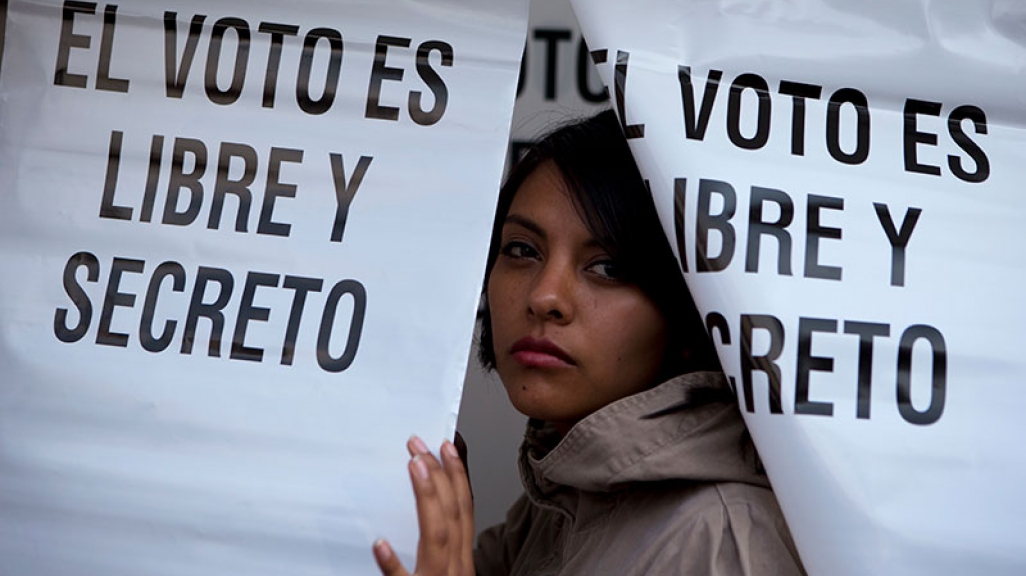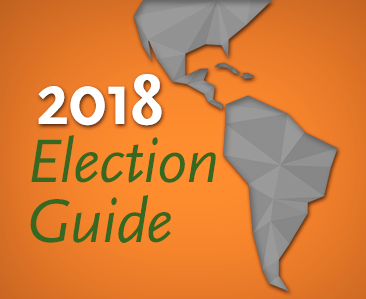Four Trends That Marked Latin America in 2018
Four Trends That Marked Latin America in 2018
From changemaking elections to Chinese inroads, AS/COA Online takes a look at four issues that defined 2018 and will shape the year to come.
From changemaking elections to Chinese inroads, here are four trends that defined 2018 and will shape the year to come.
1. Elections, elections, elections
The ballot box brought sweeping change to Latin America this year. In Brazil, right-wing former army captain Jair Bolsonaro broke the Workers’ Party four-election winning streak. In Mexico, leftist populist Andrés Manuel López Obrador became the first candidate in 30 years to win more than half the votes while his party, MORENA, experienced a wave of victories across the country that washed away the once-mighty Institutional Revolutionary Party.
Latin America’s two biggest economies chose leaders that brought them to further—albeit opposite—ends of the political spectrum, but they weren’t the only countries that experienced tumultuous elections. In Costa Rica, polls put a conservative evangelical legislator in a dead heat with a moderate but socially progressive cabinet member, though the latter, Carlos Alvarado, ultimately won by a landslide. In Colombia, a polarized race pitted the right’s Iván Duque—the eventual victor and somewhat of a political newcomer—against leftist former guerilla Gustavo Petro. Even in El Salvador, which held legislative elections, the outcome served as a rebuke of the governing Farabundo Martí National Liberation Front, which now faces a majority opposition of the conservative Nationalist Republican Alliance in Congress as the country heads into a presidential election year. And, while Cuba does not have free nor fair elections, Miguel Díaz-Canel took over the presidency in April, marking the first time the island isn’t led by a Castro in nearly 60 years.
That doesn’t mean that it was a year of complete change. Mario Abdo Benítez won Paraguay’s presidency as the candidate for the Colorado Party, which has held power in the country for the better part of 70 years. Even more glaringly, Venezuela held a May election widely seen as rigged that handed Nicolás Maduro reelection and a six-year term that starts in January 2019.
If 2018 was the year of elections, 2019 will be the year in which we will see how these new leaders shape their countries. López Obrador took office on December 1 with a critique of the economic policy of the past 36 years. The cabinet of Bolsonaro, who takes office January 1, will have more members of the military in it than any presidency since the restoration of democracy.
2. China makes inroads amid a U.S. retreat
The fact that China keeps deepening its ties with Latin America is nothing novel, but 2018 did mark a certain crystallization of the relationship. After launching its Belt and Road initiative in 2017—focused primarily on connecting the Eurasian and African continents—China kicked off this year with an open invitation for Latin America to join the $1 trillion infrastructure development project. After Chinese Foreign Minister Wang Yi delivered January remarks in Santiago de Chile, then-U.S. Secretary of State Rex Tillerson launched his own tour through Latin America the following month with cautionary notes on China’s predatory intentions.
But Donald Trump then canceled his trip to the Summit of the Americas in Peru in April, marking the first not attended by a U.S. president. Meanwhile, four more countries took up the Asian Giant’s proposal: Bolivia, Chile, Uruguay, and Venezuela all signed onto Belt and Road, following the footsteps of Panama, the region’s first country to do so last year. The deal boosts prospects for stronger Sino-Latin commercial ties, even amid the U.S.–China trade dispute. Though the two countries declared a 90-day truce in Buenos Aires at the G20 in December, China’s increased purchases of Latin American soy and meat in lieu of U.S. products solidified its position as the top trade partner for Brazil, Chile, Peru, and Uruguay.
China’s dollar diplomacy also convinced some countries to switch diplomatic recognition from Taipei to Beijing, as was the case with El Salvador and the Dominican Republic in 2018, following Panama in 2017. The U.S. State Department responded with threats to withdraw aid to countries “that take adverse actions with regard to Taiwan” under the TAIPEI Act and recalling top diplomats to those countries. Meanwhile, Panama is considering whether the Chinese embassy will sit in the Panama Canal Zone.
But one country may buck the trend in 2019: Brazil. Throughout the campaign trail, President-elect Bolsonaro decried China for “buying Brazil” rather than “buying in Brazil” and vowed to review bilateral ties. He also visited Taipei, becoming the first Brazilian presidential candidate ever to do so.
3. Migration sparks political tensions
Amid ongoing economic and political crises, at least 3 million Venezuelans have emigrated since 2014, the UN announced this year. And that figure is almost certainly an underestimation, as many remain in an irregular immigration state. Of those known migrants, Colombia has taken in more than one million, Peru nearly a half million, and Ecuador at least one-quarter million. The response by neighbors has been ultimately one of solidarity, with governments (some after missteps) coordinating to streamline the immigration process. That said, the inevitable strain on local resources has led to some pushback, most critically in northern Brazil and small Caribbean nations, where migrants have been attacked and in some instances forced to return to Venezuela. Officials are increasingly citing the exodus as a strain on regional security, which could have implications for both international legal or military action in the years ahead.
Farther north, migration hit a political boiling point in headlines, even if the numbers don’t necessarily reflect the alarm. Authorities apprehended just over 360,000 people at the U.S.-Mexico border in Fiscal Year 2018—above 2017 levels but below those of 2016. The Trump administration separated at least 2,600 migrant children from their families at the border in 2018, a practice that continues albeit under a slightly different policy. For the moment, the courts have prevented Trump from implementing policy that would severely restrict legal asylum, rulings the administration is appealing to the Supreme Court. The United States and Mexico have engaged in talks surrounding a migration agreement, with White House pushing for migrants to stay in Mexico while they await U.S. asylum processing and the new Mexican government seeking development dollars for Central American countries.
Not all Central Americans were migrating north, though: more than 23,000 Nicaraguans applied for asylum in Costa Rica in a four-month period in 2018 as the Daniel Ortega administration fatally cracked down on anti-government protesters.
4. Women expand their political capital
As political pendulums swung globally, women seized opportunities to advance their standing in governments across the Americas. From winning congressional seats to organizing social movements, women flexed their political power.
In the United States, a record number of women ran for office during the November midterms. Women not only were a driving force for the Democratic Party to garner votes, but a record number—116 women—earned seats in Congress on both sides of the aisle.
In Latin America, there are now 15 female vice presidents and the region is home to three of the four countries with the greatest proportion of women in Congress. In Brazil, one of the countries with traditionally low participation of women in politics, voters elected 50 percent more women to Congress than in the last general elections. In Mexico, women achieved near gender parity in the legislature. López Obrador named eight women to his cabinet, including in key posts heading the Interior and Economy secretariats, and selected a woman to be ambassador to the U.S. for the first time. In Colombia, Duque named Marta Lucía Ramírez as the country’s first female vice president and appointed a gender-balanced cabinet. The Alvarado administration did the same in Costa Rica, as well as now having the first Afro-descendant woman vice president in continental Latin America.
The progress in gender equality in the Americas is reflected in legislation as well. In Argentina, the legalization of abortion nearly passed in Congress—and the movement in support of it drew international attention. Women in the Brazilian legislature were able to join forces, propose, and pass legislation to combat violence against women.
- Get to know AS/COA Women’s Hemispheric Network.
- Subscribe to AS/COA Online’s Latin America in Focus podcast. In 2018, 48 percent of interviewees were women.









 Podcast: Amid Caravan Crisis, a Look at Mexico's Migration Policy
Podcast: Amid Caravan Crisis, a Look at Mexico's Migration Policy
